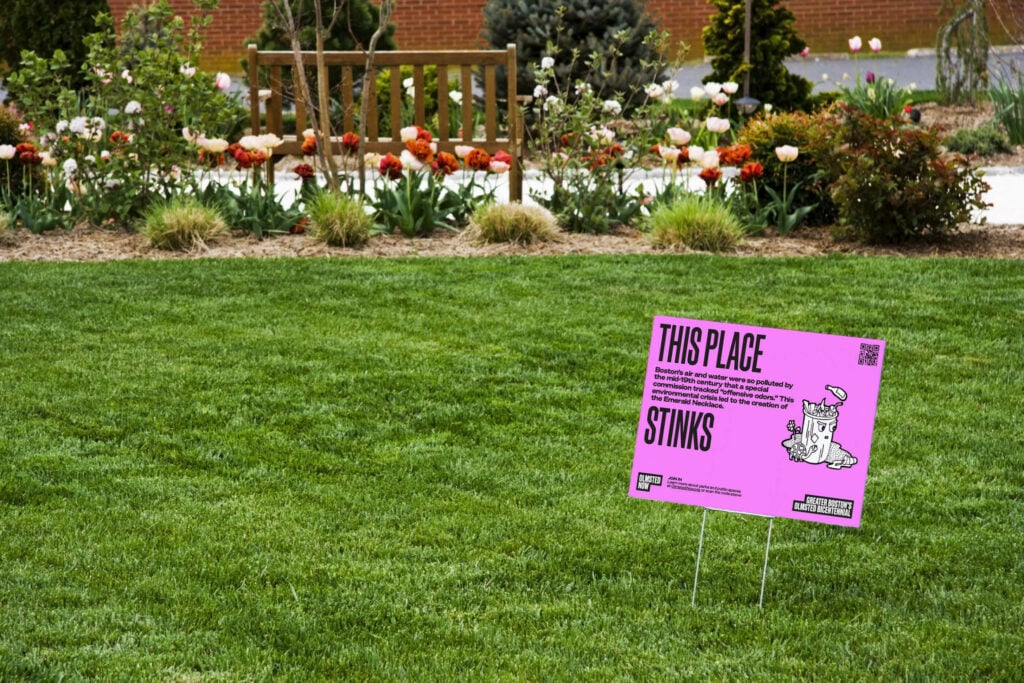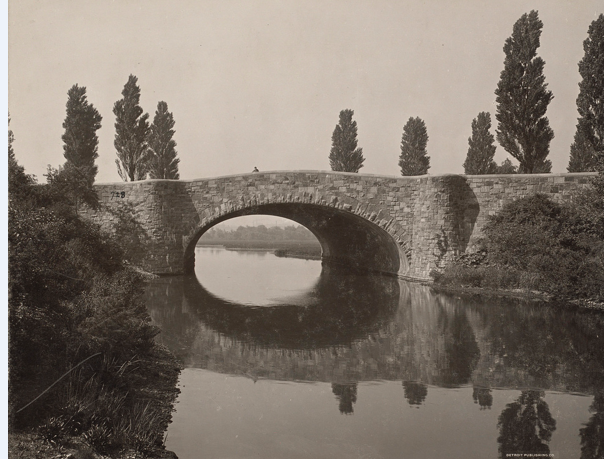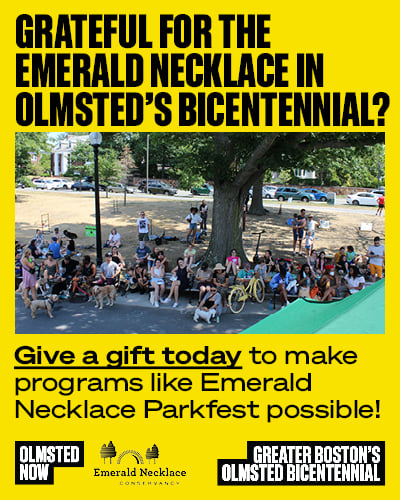On October 22 and 29 at the Rose Kennedy Greenway, Anita Morson-Matra and Jean Appolon Expressions (JAE) will present “Baldwin in the Park: Collective Healing through Movement & Meaning.” The event will feature Baldwin texts and Afro Haitian rhythm to guide relationship building and to explore and reclaim freedom in parks. Olmsted Now talked more with Anita Morson-Matra and JAE’s Jean Appolon and Meg McGrath about the project. This interview has been edited for length and clarity.
Could you introduce yourselves?
Anita Morson-Matra: My name is Anita Morson-Matra, and I’m the founder and creative director of “Baldwin in the Park.” I’m also an urban planner by trade. I am an advocate and a lover of arts and creativity and its contributions to the collective, and particularly to our healing and our wellness and opportunities for us to understand and make that happen a little bit more, not only in traditional spaces, but nontraditional spaces.
Meg McGrath: My name is Meg McGrath. I am the executive director of Jean Appolon Expressions. I’ve been with the company as a professional dancer, actually since 2010. I fell in love with Jean Appolon and everything that comes along with him in the dance world and his beautiful Haitian folkloric community. I’m just excited to be here, a part of this very special project and collaboration.
Jean Appolon: I am Jean Appolon, and I am the founder and artistic director of Jean Appolon Expressions. I’ve known Meghan, like she said, for a long, long, long time. To me, I feel like I’ve rooted in this community since I left my country of Haiti, and I felt like Boston gave me a second home to feel like I can express myself. I’ve known Anita for a while too, because she’s been coming around to class long time ago, and when she contacted us for this project, I was like, “Oh my god, this is amazing that we are reconnecting with a lot of good people that we’ve met before,” and, you know, this is even more important after COVID, to have those kinds of reconnectivity of great people. So, to me, I’m very, very pleased to be part of “Baldwin in the Park.”
How would you describe your project?
AMM: This is “Baldwin in the Park: Collective Healing through Movement & Meaning.” It’s an opportunity to highlight a portion of what the larger “Baldwin in the Park” [project] will be and is really rooted in the heart work and the healing portion of “Baldwin in the Park.” The program will include a welcome to honor the space. It will then have a little bit of understanding of the history of the space and why we are called to this space to collectively heal. Then we will be led through beautiful movement in that outdoor space together. There will be two days. It will be October 22 on the Rose Kennedy Greenway and October 29 in the Boston Common. The meat of our offering will be the dance and the movement and the rhythmic healing in the space. It will be about a two-hour timeframe.
I think it’s important to acknowledge the painful histories that many people have in these spaces and also acknowledge the good things and the ways in which we can utilize the space going forward. The hope is that people will not only feel like they are moving through things they are holding and feel more open and welcome in those spaces, but that they will be able to utilize some of the movement and tools that are provided by Jean Appolon to come back to spaces when they need to.
They can always also go to class that Jean has on a regular basis, but it’s an opportunity to do this in outdoor spaces—these are spaces that are connected to a troubled history for Black and brown people in particular. I think another part of the programming is to intentionally highlight that we have that history. I think often the case is, with changes in the city and increased investment, we can feel excluded from certain places. I don’t think that folks really understand the depth and breadth of the history of Black and brown people particularly around the North End with the Rose Kennedy Greenway, and Beacon Hill with Boston Common and many other neighborhoods throughout the city. Even though they feel more like business districts and financial districts, they are indeed neighborhoods, and they were proper neighborhoods with full communities before.
Could you say any more about choosing the Rose Kennedy Greenway and Boston Common for your events?
AMM: We have history in these neighborhoods. The Museum of African American History and African Meeting House is in Beacon Hill. A lot of that neighborhood were primarily newly freed, formerly enslaved Africans. It used to be one of our neighborhoods. There are points in history where Black and brown people lived in these neighborhoods. Understanding the painful experience that displacement has on people, there’s a certain element of pain that lives there. [We’re] acknowledging that and understanding that even though we no longer live in those neighborhoods, it is still a space for us. It is still a beautiful space that we can utilize. We too can benefit from the increased investment. Those beautiful gardens, those beautifully maintained spaces, and those historic trees that have seen the faces of our ancestors—it’s important for us to engage with them now.

What was the inspiration behind the event title, “Baldwin in the Park: Collective Healing through Movement & Meaning”?
AMM: James Baldwin’s words will ground us. This event, like all “Baldwin in the Park” events, will allow us the opportunity to engage with Baldwin’s themes and their connection to today. Artists and creatives will contribute in the creation of theatrical performances, creatives workshops and other offerings that inspire.
Why do parks need more equity and spatial justice programming? How does your program speak to that need in Boston parks?
JA: I feel like this great tragedy of the [COVID-19] virus, I can tell you that to me, this is something that’s gonna stay with me a lot. It is starting to happen that we’re coming outside, but there is that feeling and that energy of disconnectivity that’s still happening strongly. I feel like [“Baldwin in the Park”] will definitely allow people to say, like, “OK, you can come and trust each other again and connect with each other again,” and really remove those practices for centuries of people trying to make certain space for a certain group of people and limit other group of people to be part of it. It’s something that I witnessed in my own country, because I grew up in Haiti, which is a rich country by story and also an impoverished country by misleadership. I was talking about this two weeks ago with a friend of mine who went to the same school in Haiti: We were like, how can we grow up in a country where we have Black president, and we still had to suffer from colorism, from racism, in our own land? To me, it’s an everyday effort, and I feel like I’m very pleased to see that people like Meghan, people like Anita, many other people, our team at JAE, this is what we’re for: How we can make this world more inclusive and remove the cancerous practices that’s been dividing people so much.
MM: With the pandemic, so much was changed in inaccessibility, especially around space usage outdoors, and JAE was really excited to be able to just go out into parks and open spaces and lead our big drumming and Haitian folkloric dance classes for everyone. We had people who experience homelessness and people who may be struggling with drug and alcohol abuse joining us, feeling welcomed, and dancing with us in community. Now that things are kind of going back a little bit [to pre-pandemic practices] and people are going indoors, it’s much harder to be outside in those spaces, due to permitting and just, maybe, people not wanting to hear loud drumming in some of these spaces that there’s a lot of tourists and whatnot. So, I think we are so grateful that Anita and Olmsted Now are making this possible again, even if it’s in a smaller way with just a couple of classes, so that we can bring this type of healing and artistic work to everyone.
AMM: I think that understanding how we explore outdoor spaces and what it can provide to folks, whether it’s programmed activities or passive activities, is really key and important. I think that should exist for all people throughout Boston. There should be no exclusion in that. People should be able to use the spaces as they need to and there should be opportunities for culturally relevant, culturally grounded programming, and there should be intentional support for those programs.
For each of you, what is your favorite thing about parks and public spaces?
AMM: I like being able to be still in a space. So, you know, having spaces that are so big or varied that you can pull away by yourself and you can either lay in the grass or sit in the grass or take your shoes off and just kind of think to yourself. And then also [having] spaces that very much call for people to be in community together. The spaces that you’re like, “Oh, activities definitely happen here.”
Parks offer opportunities for healing. Even when it starts to rain, or in the snow—sometimes you can hear the slight snow falling on the leaves. It’s just such a beautiful experience and really an opportunity for us, if we are connected enough or open enough to receive it—just the gratitude of being alive and being able to experience it, even those really subtle, simple things. The opportunity to do that either by yourself or with other people is really important. And I love that.
JA: I feel like when we have programming like this, to come on parks, it really gives the public the understanding of like, “This is our home. This is our backyard. This is our space where we can be.” We even talk about an expression that we have in Haiti: “lakou.” This means backyard, this means, like, where we can gather together as public to connect. And I feel like programming like this can really make people understand how you can come together. I went to the gym this morning, and I just realized that there are many great, beautiful people around each other. We just focus on trying to do the workout and we’re so focused, and we’re not even able to have the decency to even talk to each other, to even open a conversation with each other.
I feel like these programs like “Baldwin in the Park” and many other programs that’s happening around parks that we do, we allow people to just introduce themselves and reconnect themselves with each other. Because we cannot keep on living in this society where we feel like we cannot talk to each other.
MM: I agree about those moments that we get to just meet strangers and connect on a deeper level than just, like, passing and bumping into each other. I spent some time with Jean in the Dominican Republic this summer, and I’ve been to Haiti with him, and I went to Lisbon this summer, and there are so many spaces in those other countries where it is just like a big party for people to, you know, bump into each other and then sit and be and enjoy and experience life and music and art and different language with one another. Whereas in Boston, I feel like, you know, I’ve been here for a long time and it’s rare that you go to a park downtown and have a moment that’s longer than, like, someone giving you a dirty look and walking on. I think it is very necessary to have a lot more open, welcoming spaces where people can spend time and connect with nature and one another on a deeper level.
What 3-5 words capture the essence of your program?
MM: I would say connection, community, healing.
JA: I will say healing, hope, connection, obligations, and strength.
AMM: And mine are community, healing, and movement.




